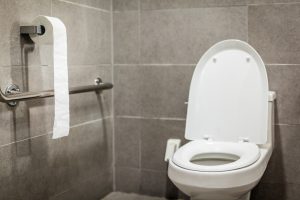Imagine a cold night in mid-January. You’re ready to snuggle up under the covers and turn in for the night, but before you do, nature calls.
So you bundle up in your heaviest coat, put on a scarf and hat, socks and shoes, grab a flashlight or lantern, and make the trek through the backyard to the outhouse. On cold nights, you’d prefer to have the outhouse a bit closer to the house, but on hot summer days – when it’s particularly fragrant – you’re glad it’s well away.
Life Without Indoor Plumbing
This is what life would be like if you didn’t have indoor plumbing at your house, and it’s amazing to think that it really wasn’t that long ago that this was how people lived. Depending on how old they are, your grandparents may be old enough to remember outhouses.

Just a hundred years ago, in urban neighborhoods, there were public toilets on the block that everyone shared.
Maybe if you don’t want to brave the weather for the public toilet or the outhouse, you can use a bedpan, and when you’re finished you can throw it into the open sewer on the street below.
Plumbing Protects Our Health
If you read travel journals from 150 to 200 years ago, you can find references to the stench coming from the open sewers in cities. Exposed sewage is dangerous and was often responsible for wide breakouts of disease.
Of course, even today this is everyday life for some people. More than a third of the world’s population is without indoor plumbing. According to world health organizations, some 2.5 billion people in developing and rural nations are without safe, private toilets, and this is a common factor in disease and death, even today.
When we shut the door to our private bathroom, we probably don’t always give a lot of thought to the benefits of indoor plumbing, but there’s no question that indoor plumbing has improved our lives.
